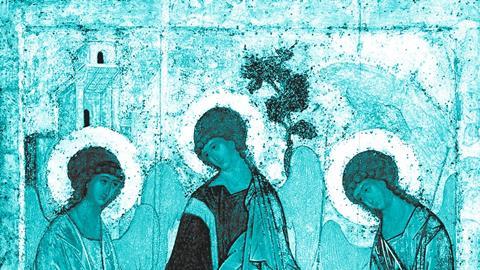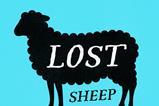It’s September and the kids are heading back to school: parents breathe a sigh of relief, teachers pull together the final few lesson plans and children’s and youth workers prep for a new term. In the spirit of it all, I thought we too could school ourselves on the basics of theology.
GRANDE LATTE – John 16:1-15
FLAT WHITE – John 16:12-15
ESPRESSO – John 16:15
“All that belongs to the Father is mine. That is why the Spirit will receive from me what he will make known to you.”
Over the next few months, we will cover the big topics of our faith that all too easily get written off as stuff for dusty books and boffins.
Let us begin with the Trinity, as the ultimate in topics people avoid or yawn at if they don’t realise what a joy and a gift it is.
This is a word you won’t find explicitly in the Bible. Instead, it is one the Church cooked up to make sense of the mystery of a God who is completely one and yet has three distinct persons.
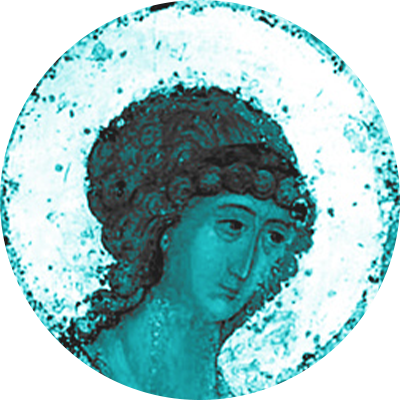
The trinity is God
Last year I started my first year of a master’s in theology. I was one year into vicar training and an undergraduate in theology, when the college offered me a place on the master’s course. After a crisis of confidence, I took it.
Stepping up to this higher level of training scared me a bit if I’m honest. I hadn’t studied theology before and I feared the gaps in my knowledge. I didn’t know my Barth from my Bonhoeffer and my Augustine from my Athanasius.
The college threw us in at the deep end with Rowan Williams teaching us all about the Trinity. He is a genius. He also looks like the stereotypical image of God – big wiggly eyebrows and all. I was terrified.
But each lecture I left worshipping God, revelling in all I’d learnt and all the questions that unearthed. Exploring this core idea of who God is brought me ever closer to him.
I learned that God’s gift of revelation – of God saying “Hello, this is me” – is not a thing only earned if you have read lots of books, it is a gift of grace best received when we approach like a little child: humble, wide eyed and excited to know more. It is best received in worship.
I also learned to see the Trinity as a paradox, a beautiful dance in which we know God as totally unified and complete singular one, while also noticing God’s distinct, but equal persons or parts who are fully God – Father, Son and Holy Spirit.
We know God to be one person from the Old Testament, as God reveals Godself to Israel in the Shema: “Hear O Israel, the Lord your God is one” (Deuteronomy 6:4). But there is something about this that is unique and different, because God has a Son, who is also God, and Spirit, who is also God.
We know God is three in passages like the one we are exploring this month. Jesus points to the Father constantly, especially in John’s Gospel (John 6:38; 10:30; 14:9; 15:10 to name a few). He knows the Father completely, is sent by the Father and receives all he has from the Father.
But he is also reliant upon the Spirit, who appears at his baptism and ushers him from it into the desert (Mark 1:9-12). And yet, the Spirit can only come when he has finished his work (John 16:7). They are united, totally as one God but distinct in their relationship to each other.
All of this is beautiful, mind blowing and mysterious. And the more I learn about God as Trinity, the more I realise there is to know. And that is worship.
“Worshipping the whole Trinity takes us to a deeper, richer understanding of God.”
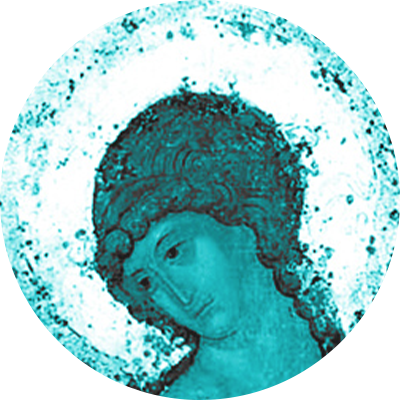
The Trinity is worship
That’s the first thing to remember with this, exploration of the Trinity is a step into worship, a chance to explore the fullness and greatness of God.
Using art to worship is a long-held tradition. A quick wander around the National Gallery is testament to hundreds of years of Christian exploration of God on canvas, and that’s often only the Western stuff.
One of my favourite pieces of Christian art is an icon by Andrei Rublev, named ‘The hospitality of Abraham’. This piece depicts the three figures who visit Abraham (Genesis 18:1-8), but it is rich with symbolism that is interpreted as the Trinity.
The three people gathered around the table bend to each other in love and converse with each other like old friends. Yet there is a gap at the table, where anyone could be invited to join them.
Their feet point towards that person, like they’re just waiting for that person. I often use this beautiful piece of art, and later interpretations of it, to pray. It restores my image of God and reminds me who I pray to. Worshipping the whole Trinity takes us to a deeper, richer understanding of God.
I chose this passage to show the Trinity, not only because it reminds us of the interrelations between the Trinity but because it shows the context in which Jesus explained his place within it to his disciples.
Jesus warns his followers the night before his death that they will face persecution and even death for the truth of these teachings. Jesus explains the truth of the Trinity as a comfort to his friends and followers ahead of his death and the subsequent threats to their own lives. The Trinity can offer the same comfort to us in times of hardship.
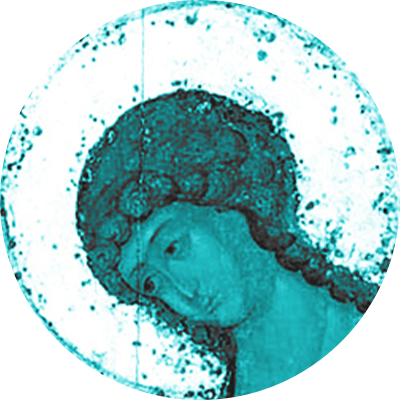
The Trinity is relationship
What makes it so beautiful, godly and countercultural to our human relations is the uncompetitive love each person of the Trinity as for the other. The Father is defined by the Son, the Son by the Father and the Spirit by relationship to the Father and the Son.
They need each other, love each other, exalt each other. They are made complete by each other. Their relationship is a promise of God’s love and the reason we can say God is love (1 John 4:8).
God is complete not through relationship with us, so God does not need us. Instead, the trinitarian love overflows to us and all creation, as God welcomes us to the table to sit and eat and talk, just as Rublev shows in his icon.
The Trinity is thus a reminder that God is perfect relationship, and one we are invited into to experience for ourselves. May we know that more and more each day as we get to know this mysterious person(s).
TAKEAWAY
The Trinity is a beautiful, paradoxical reminder of the fullness and the grace of God.
PRAYER
Maybe you want to find Rublev’s icon and take time to meditate on what God wants to say to you today










